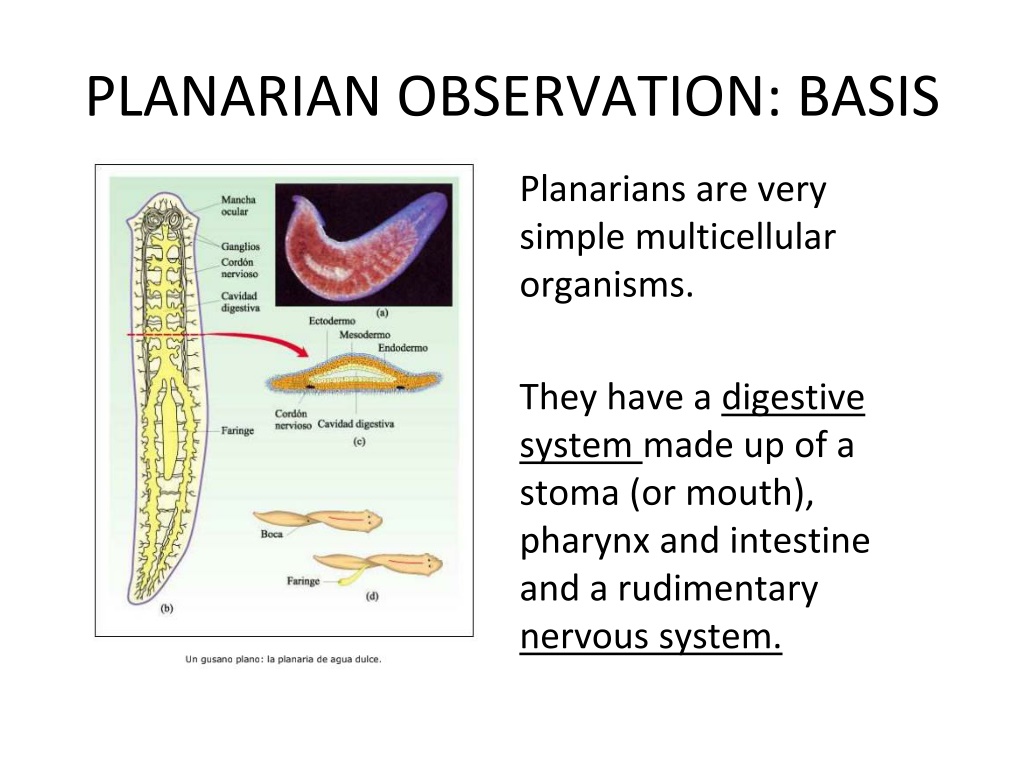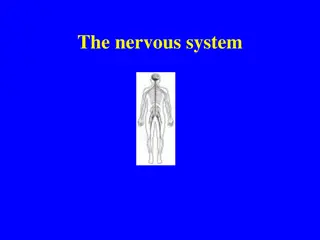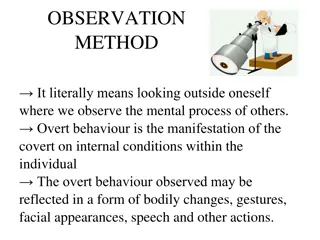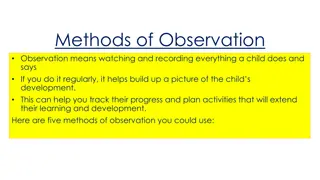Planarian Observation: Nervous System Activity Study
Planarian Observation involves studying the effects of different substances on a planarian's nervous system. Through remote laboratory experiments, observations are made on the movement of planarians in various solutions compared to a control solution. Results are analyzed to determine the effects of substances such as sugar, ginseng, caffeine, and taurine on planarian movement. Conclusions explore the substances that increase or decrease planarian movement, identify stimulants and depressants of the nervous system, and relate caffeine and taurine effects to humans. The experiment is based on studying the nervous system's response, aiming to understand similarities or differences between planarians and humans.
Download Presentation

Please find below an Image/Link to download the presentation.
The content on the website is provided AS IS for your information and personal use only. It may not be sold, licensed, or shared on other websites without obtaining consent from the author. Download presentation by click this link. If you encounter any issues during the download, it is possible that the publisher has removed the file from their server.
E N D
Presentation Transcript
PLANARIAN OBSERVATION: BASIS Planarians are very simple multicellular organisms. They have a digestive system made up of a stoma (or mouth), pharynx and intestine and a rudimentary nervous system.
PLANARIAN OBSERVATION: BASIS REMOTE LABORATORY: Planarians are flatworms that can be used to study the effect of different substances on the nervous system. In this remote laboratory you can choose the solution into which to place the planarian.
PLANARIAN OBSERVATION: PROCEDURE 1. Choose the control solution.
PLANARIAN OBSERVATION: PROCEDURE 2. Count the number of times the planarian crosses a line in 5 minutes. Time controller: 5 minutes.
PLANARIAN OBSERVATION: PROCEDURE 3. Choose the sugar solution and count the number of times the planarian crosses a line in 5 minutes. 4. Choose the ginseng solution and count the number of times the planarian crosses a line in 5 minutes. 5. Choose the caffeine solution and count the number of times the planarian crosses a line in 5 minutes. 6. Choose the taurine solution and count the number of times that the planarian crosses a line during 5 minutes.
PLANARIAN OBSERVATION: ANALYSIS 1. Compare the results: a) In the control solution (pond water) the planarian crossed a line _______ times. In the sugar solution the planarian crossed a line _______ times. In the ginseng solution the planarian crossed a line _______ times. In the caffeine solution, the planarian crossed a line _______ times. In the taurine solution, the planarian crossed a line _______ times. b) c) d) e) a) The difference between the number of times the planarian crossed a line in the control solution and in the ______________ solution is the minimum. The difference between the number of times the planarian crossed a line in the control solution and in the ______________ solution is the maximum. b)
PLANARIAN OBSERVATION: CONCLUSIONS a) Which of the substances increased the planarian s movement the most? Why? b) Which of the substances decreased the planarian s movement the most? Why? c) Which substance can be considered as a stimulant of the planarian s nervous system? Why? d) Which substance can be considered as a depressant or inhibitor of the planarian s nervous system? Why? e) Search for information about the effects of caffeine and taurine on the human nervous system. Do they have the same effects in humans as in planarians? Why? f) On which vital function is this experiment based on: nutrition, interaction or reproduction? Why?

























